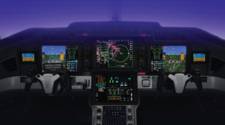Monitoring system statuses
Mission Control

© Photo by Shtefan Lounge on Unsplash
Mission Center, a graphical system monitor, groups all important system statuses in a compact, intuitive interface.
Many distributions come with software for monitoring a computer's system status. In most cases, these are apps integrated into the desktop environment. Gnome, for example, introduced a system monitor at an early stage and KDE followed suit, providing a graphical front end for system monitoring in the form of KSysGuard [1]. The Mate desktop took over the existing tool from older Gnome versions without changing the visuals, and even Xfce has its own panel applet for displaying system statuses.
Other desktop environments, on the other hand, use terminal programs such as htop or Btop++ [2] with very plain, pseudo-graphic interfaces. Unlike graphical applications, these tools do not give users the ability to select different monitor views at the push of a button.
This is where Mission Center [3] enters the scene. Mission Center, written in the Rust programming language and based on the GTK4 toolkit and Libadwaita, works independently of the desktop environment. With its fresh appearance, it outshines many of the traditional graphical monitoring programs.
[...]
Buy this article as PDF
(incl. VAT)
Buy Linux Magazine
Subscribe to our Linux Newsletters
Find Linux and Open Source Jobs
Subscribe to our ADMIN Newsletters
Support Our Work
Linux Magazine content is made possible with support from readers like you. Please consider contributing when you’ve found an article to be beneficial.

News
-
Valve Announces Pending Release of Steam Machine
Shout it to the heavens: Steam Machine, powered by Linux, is set to arrive in 2026.
-
Happy Birthday, ADMIN Magazine!
ADMIN is celebrating its 15th anniversary with issue #90.
-
Another Linux Malware Discovered
Russian hackers use Hyper-V to hide malware within Linux virtual machines.
-
TUXEDO Computers Announces a New InfinityBook
TUXEDO Computers is at it again with a new InfinityBook that will meet your professional and gaming needs.
-
SUSE Dives into the Agentic AI Pool
SUSE becomes the first open source company to adopt agentic AI with SUSE Enterprise Linux 16.
-
Linux Now Runs Most Windows Games
The latest data shows that nearly 90 percent of Windows games can be played on Linux.
-
Fedora 43 Has Finally Landed
The Fedora Linux developers have announced their latest release, Fedora 43.
-
KDE Unleashes Plasma 6.5
The Plasma 6.5 desktop environment is now available with new features, improvements, and the usual bug fixes.
-
Xubuntu Site Possibly Hacked
It appears that the Xubuntu site was hacked and briefly served up a malicious ZIP file from its download page.
-
LMDE 7 Now Available
Linux Mint Debian Edition, version 7, has been officially released and is based on upstream Debian.

